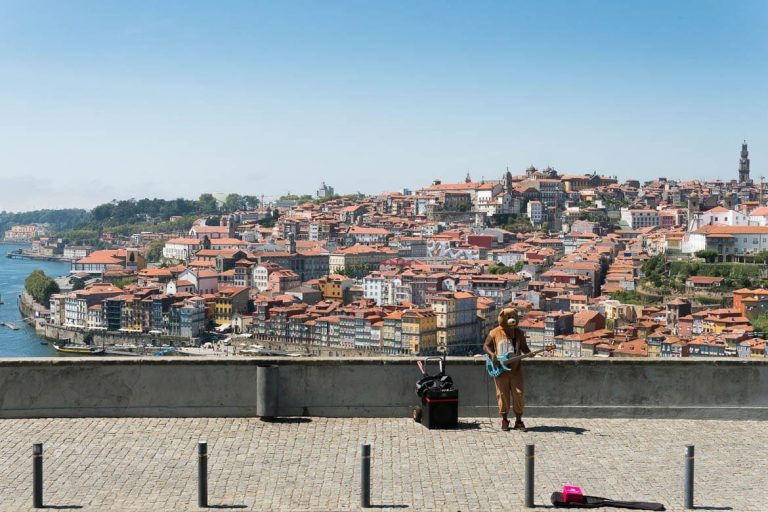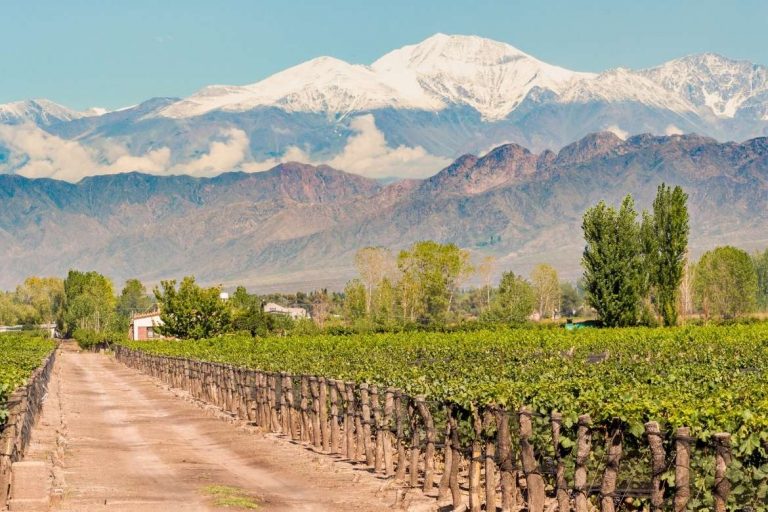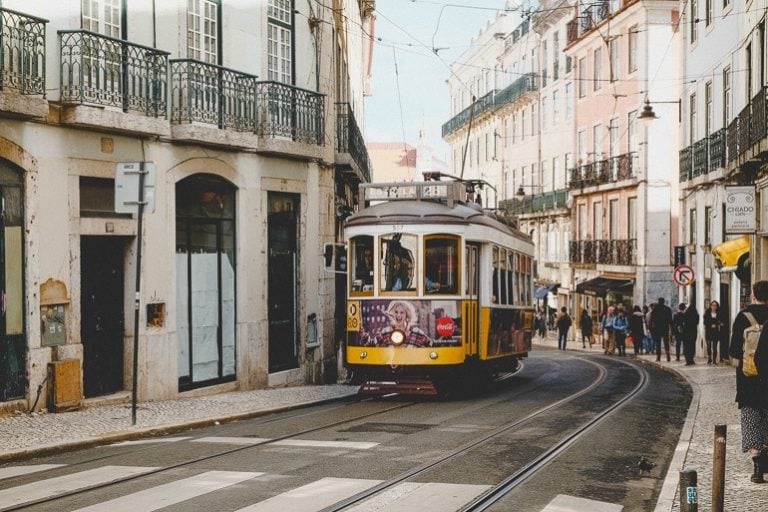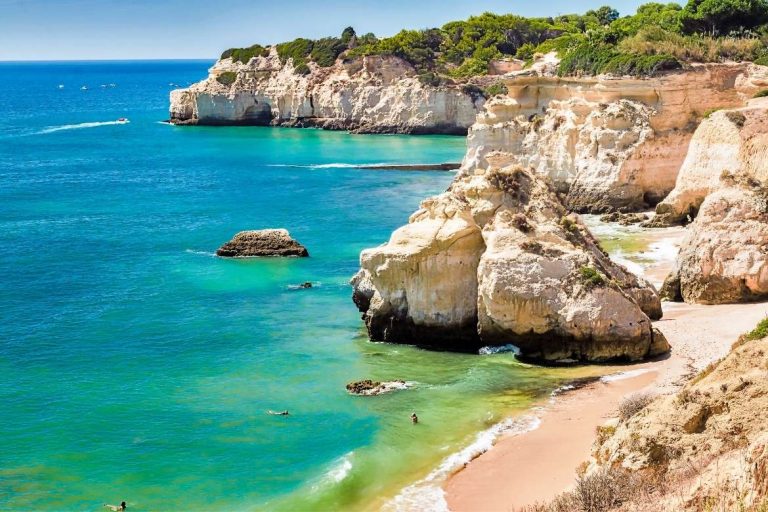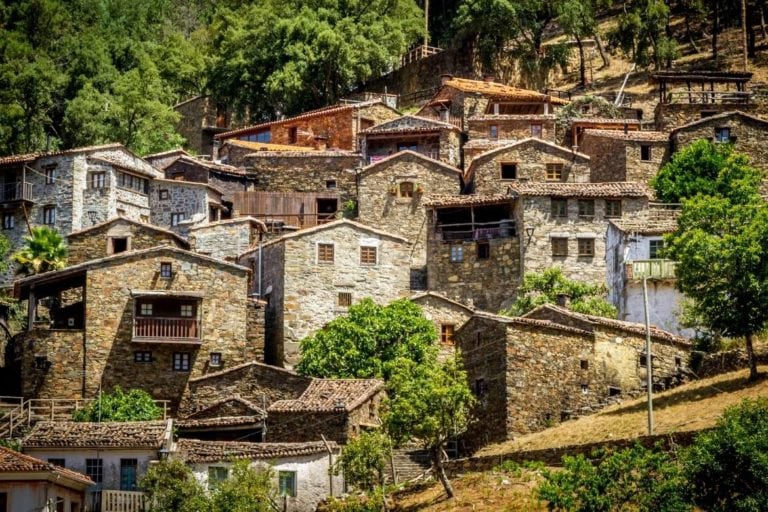Surrounded by nature, medieval landscapes, and the peace of a place that seems to have stopped in time and continues at its own pace. So is Alentejo, the largest region in Portugal, which occupies approximately one-third of the national territory but with 5% of the population, a mandatory stop between Lisbon and the Algarve. With several villages and breathtaking natural and architectural views, the region is an invitation for a road trip.
One of Alentejo’s highlights is its rich gastronomy, with great olive oils, DOP cheeses, and renowned wineries, being considered one of the world’s most important wine-producing regions. Next, you will find the main cities to visit in the Alentejo.
Read more: Best Wine Hotels to stay in Portugal
The Main Regions and Best Cities to Visit in Alentejo
To make it easier to plan a route through the Alentejo, we divided the article into 4 sub-regions: Alto Alentejo (Northern), Central Alentejo, Baixo Alentejo (Southern), Alentejo Litoral (Coast).
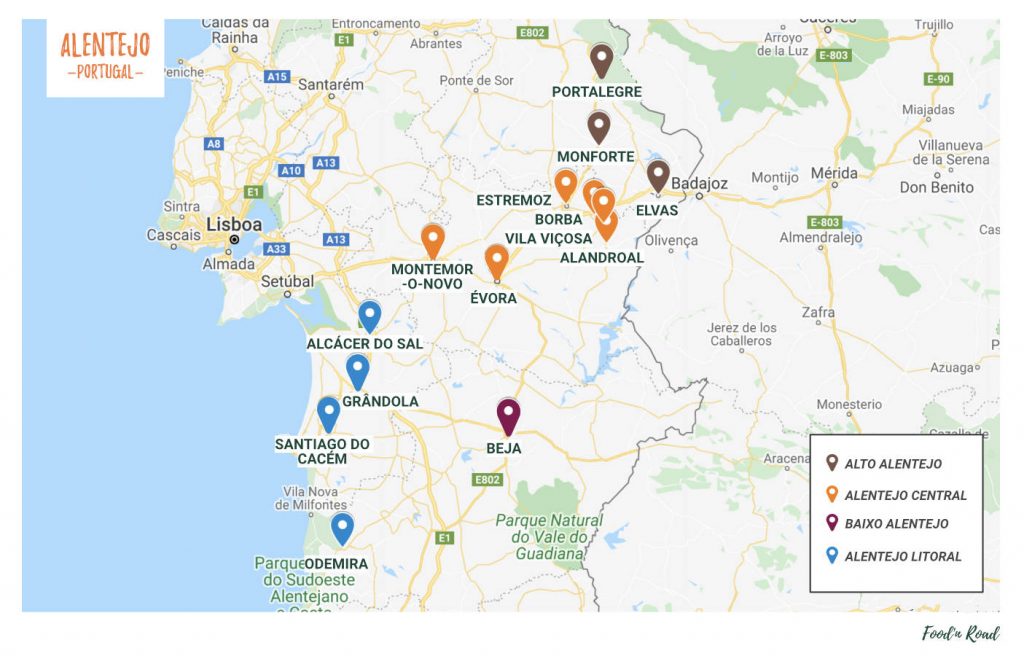
Alto Alentejo (Northern Region)
Alto Alentejo, the northern region, is famous for its landscapes and historical wealth. A region of Heritages translated into buildings, art, and gastronomy. You will be surprised by the diversity of its nature, culture, and flavors.
Portalegre
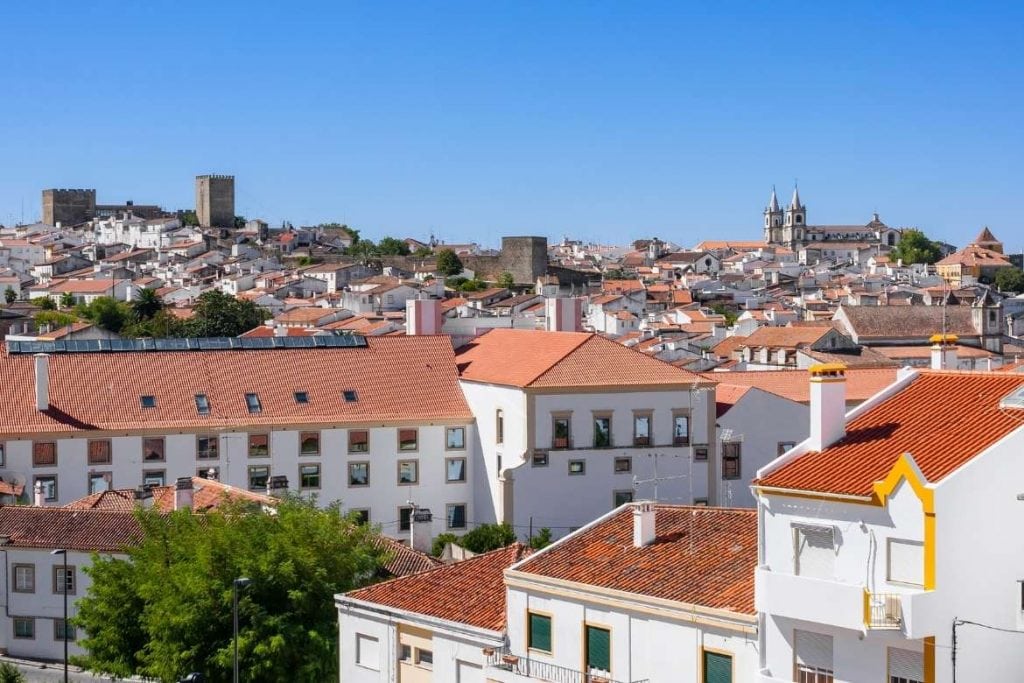
The city of 25 thousand inhabitants and close to Spain’s border stands out for its medieval architecture and religious monuments. In the 16th century, it received a diocese and, since then, it has seen several religious properties rise that last as tourist spots, such as the Sé Cathedral; the Monastery of São Bernardo, which has a beautiful tile panel; and the Santa Clara Convent, which houses the municipal library.
Portalegre is also known for weaving and its skill with carpets, making the Tapestry Museum an indispensable visit. Another highlight is the Castle of Portalegre. For the local gastronomy, the restaurant Solar dos Forcados, specializing in meat, is listed in the Michelin Guide under the Bib Gourmand category.
Monforte
Located 30 km from Portalegre and with approximately 2 thousand inhabitants, Monforte brings one of the most desired accommodations in Alto Alentejo, the Torre de Palma Wine Hotel. In addition to the winery, it also offers balloon rides. Near the Republic Square, in the heart of Monforte, is the Mother Church with the Chapel of Bones, all lined with skulls and human bones. Just behind is the Castle of Monforte, in Gothic style.
Castelo de Vide
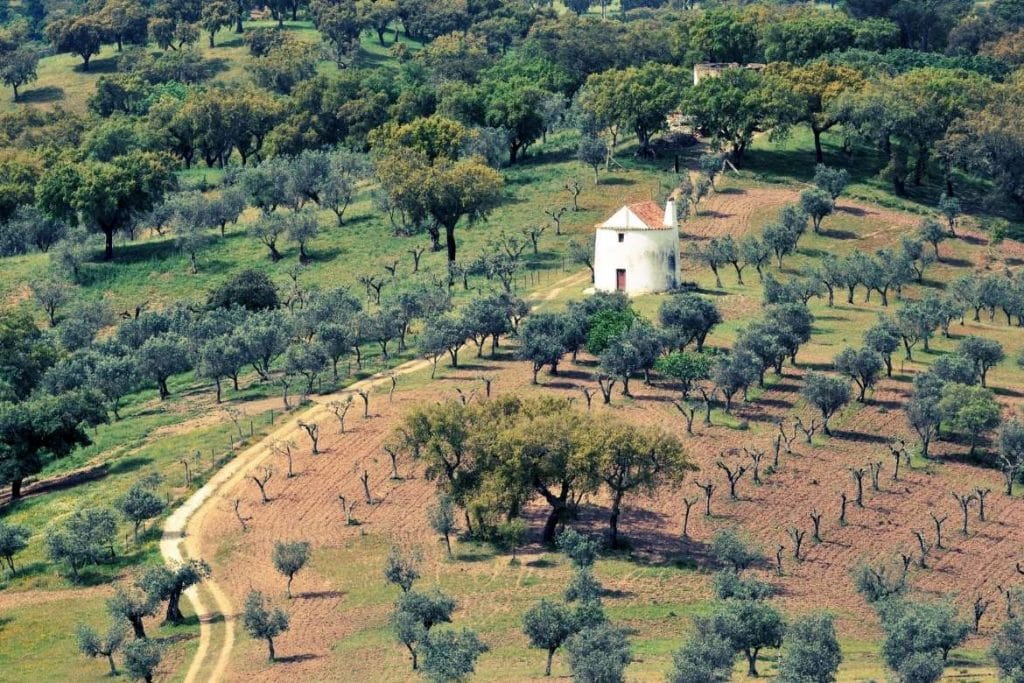
The small Alentejo village is famous for its whitewashed houses and thermal waters. Castelo de Vide itself is already a main tourist attraction in the region, but not only. The village’s charm is to get lost in the steep streets and immerse yourself in the strong local Jewish culture. In Castelo de Vide, you can also find the Quinta das Lavandas, a cozy hotel amid 5 hectares of lavender plantation.
The cuisine stands out for dishes like sarapatel, alhada de cação and migas with entrecosto. Also, try Nisa’s DOP cheese, made with sheep’s milk. If you are driving, take the opportunity to visit the Medieval Castle of Marvão, located in the village of Marvão, 12 km away.
Elvas

The city of Elvas is bordered by Spain and is considered the largest fortress city in the world and a UNESCO World Heritage Site. It is not by chance that its most famous image is the view from above, in which one can glimpse the forts in the shape of a star. The main attractions are the Graça Fort (Conde de Lippe), Santa Luzia Fort, and the Amoreira Aqueduct, an impressive construction of 8km in length.
Central Alentejo
In this subregion, you will find Évora, the capital of Alentejo, and the preferred area if you’re looking for a day trip from Lisbon. The 130km journey from the Portuguese capital to Évora lasts around 1h30 by car. Still, it counts with the ease of buses and trains at various daily times. Nature in communion with architecture is the Alentejo brand: plains with vast vegetation, hills with a castle, and a fairy tale look. The local gastronomy is based on the land elements, such as pork and lots of bread.
Évora
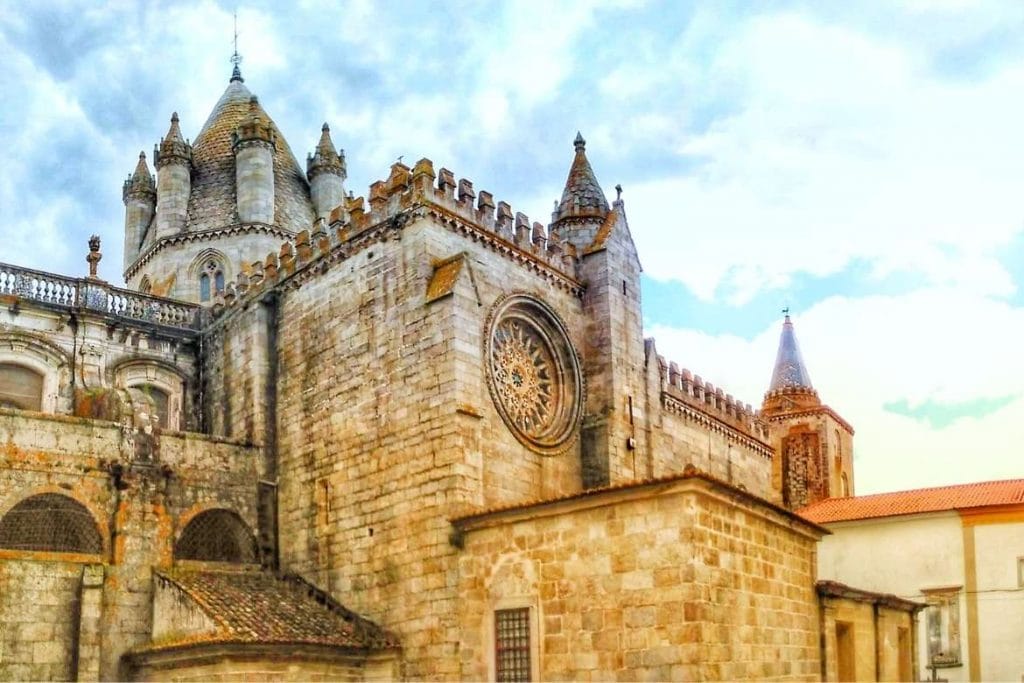
If you are in Lisbon with the opportunity of a day or two to get to know just a piece of Alentejo, it is for Evora that you must go. In addition to the short distance and ease of movement, the city is an open-air museum.
Considered a World Heritage Site by Unesco, Évora is divided into two parts: the modern and the historic, located within the medieval walls. Most tourist attractions are in the historic center, such as the Roman Temple, one of its postcards. Opposite the temple is the Cadaval Palace, which was home to several Portuguese monarchs.
Another attraction that arouses curiosity is the Chapel of Bones, with walls lined with human skulls, which convey the transience of life. Other places to visit are Evora Cathedral, Lóios Church, Evora Public Garden, and Giraldo Square.
To enjoy the best of the region’s gastronomy, the favorite restaurant among many visitors is Fialho, a traditional Portuguese tavern with game meat and cod dishes. For the Wine fans, numerous wineries produce the famous DOC Alentejo, including Adega Cartuxa, producer of the emblematic Pêra-Manca.
Montemor-o-Novo
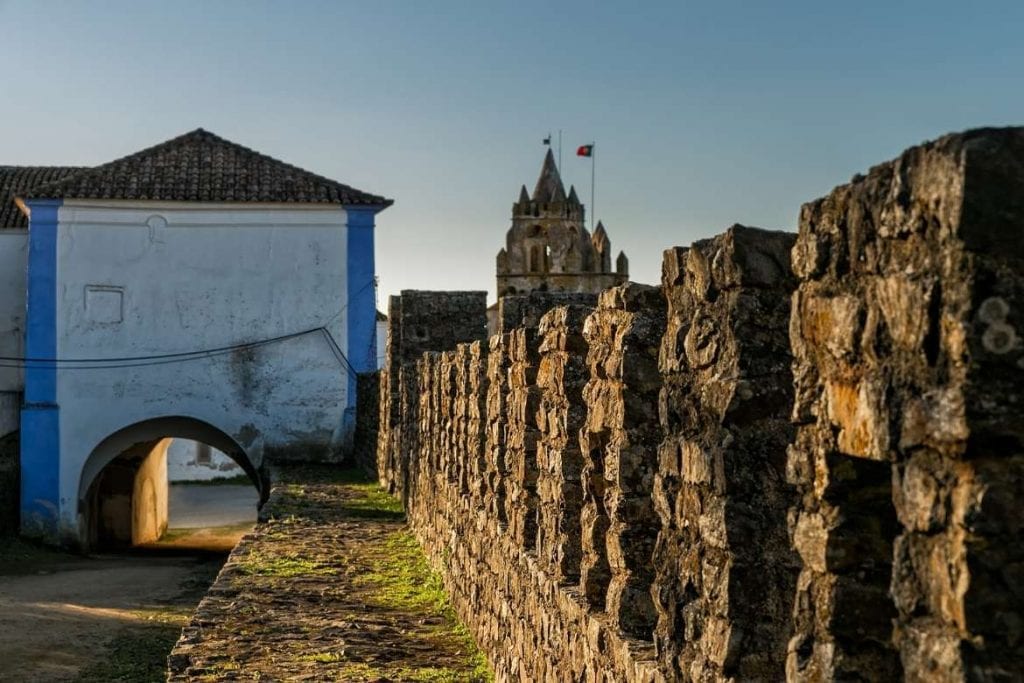
It is the second-largest city in Central Alentejo and is 30km from Évora. It was there, more precisely in the Paço dos Alcaides, that the court took decisions such as sending Vasco da Gama to the Indies. The religious centers set the tone for tourism, especially the Convent São João de Deus, the Convent São Domingos, and the Church Matriz, which has a beautiful fresco on the ceiling.
Alandroal
The peaceful village has two medieval castles, the Castle of Alandroal and the Castle of Terena, and a fortress, Juromenha. Just 45 minutes south, you will find the renowned Herdade do Esporão winery.
Estremoz
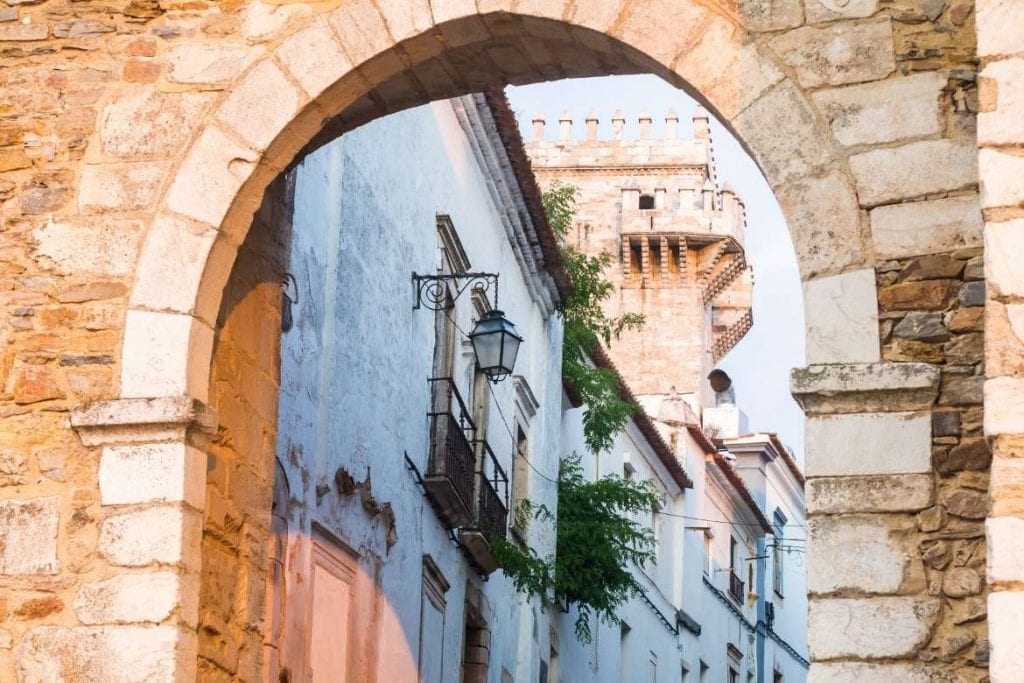
At the top of a hill, a castle surrounded by a medieval wall welcomes visitors to Estremoz, known as the White City, the main city on the marble route. Estremoz looks like an enchanted village with its white houses and architectural monuments full of stories.
The wall has four marble doors that look like time travel portals. They are called Porta de Santo Antônio, Porta de Santa Catarina, Porta dos Currais and Porta de Évora. Just go through one of these “borders” to find winding streets that seem to have stayed in the past. In addition to the castle, other sights are the Church of Santa Maria, the Church of São Francisco, the Torres da Couraça, the Chapel of Nossa Senhora dos Mártires, the Congregados Convent, the Cloister of Misericórdia and the Largo General Graça, with its water mirror with fountain. It is also worth mentioning the Estremoz Dolls, one of the most famous handicrafts in the Alentejo.
Borba
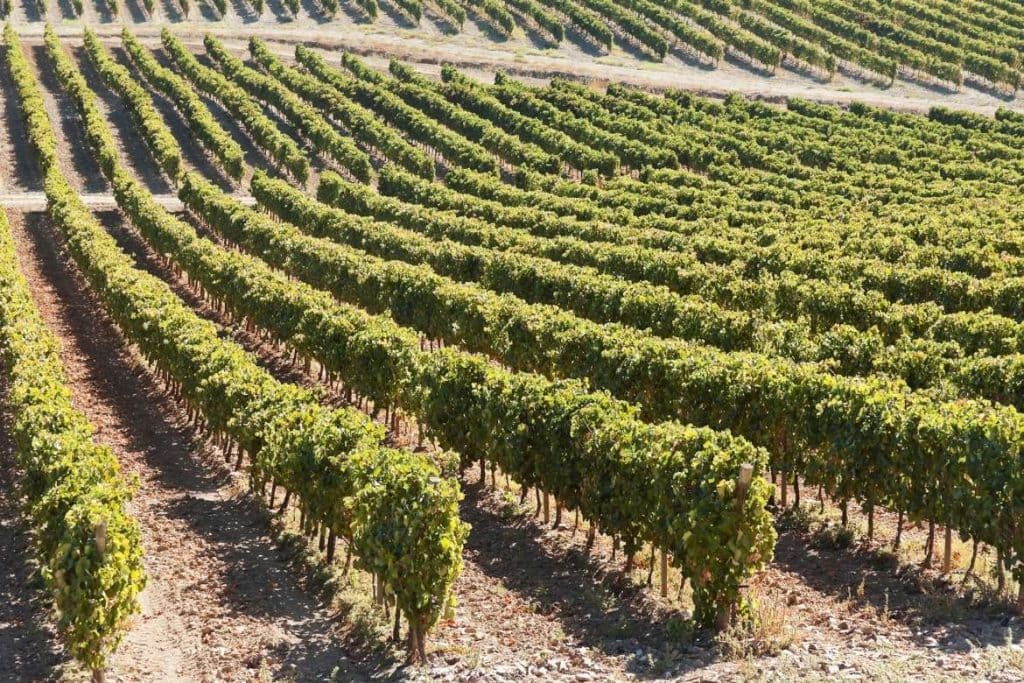
Famous for its red wines, Borba is the least visited of the three marble cities in the Alentejo (the others are Estremoz and Vila Viçosa). Stroll around the Castle of Borba, take photos of the Bicas Fountain – all in marble – and, of course, enjoy a good wine. In addition to visiting the Adega de Borba, try the cheeses produced in Rio de Moinhos and the traditional Borba bread.
Vila Viçosa
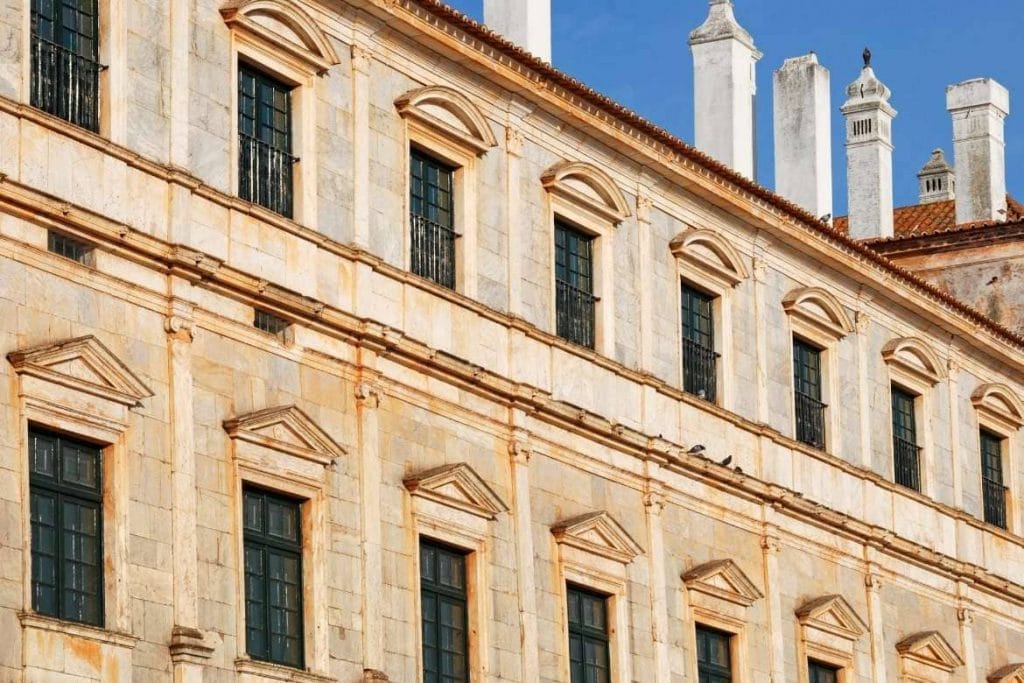
Just 8km from Borba, Vila Viçosa is a village that is home to at least one major attraction: the Paço Ducal. The palace, built around 1501, has a façade covered in marble about a hundred meters long and houses more than 50 rooms open to the public. Known as the Princess of Alentejo, the village keeps some secrets, such as the remains of the poet Florbela Espanca, which lies in the cemetery next to the Castle of Vila Viçosa. Within the walls, the Sanctuary of Nossa Senhora da Conceição in Vila Viçosa, Portugal’s patron saint, can also be seen.
Alentejo Coast
While Upper (Alto) and Central Alentejo draw attention to the green of its hills, the white of medieval buildings, and the whitewashed houses, the coast combines with sun and heat. It is a place to find small havens in the form of wild beaches. In gastronomy, the elements of the land come out, and the seafood comes in.
Santiago do Cacém
The city has a lot of resemblance to most of the Alentejo landscape, with a castle on top of a hill and Roman ruins (Miróbriga). For those who want a change of scenery to see the sea, Costa Beach and Lake Santo André are relatively near options, 25 minutes by car.
Alcácer do Sal
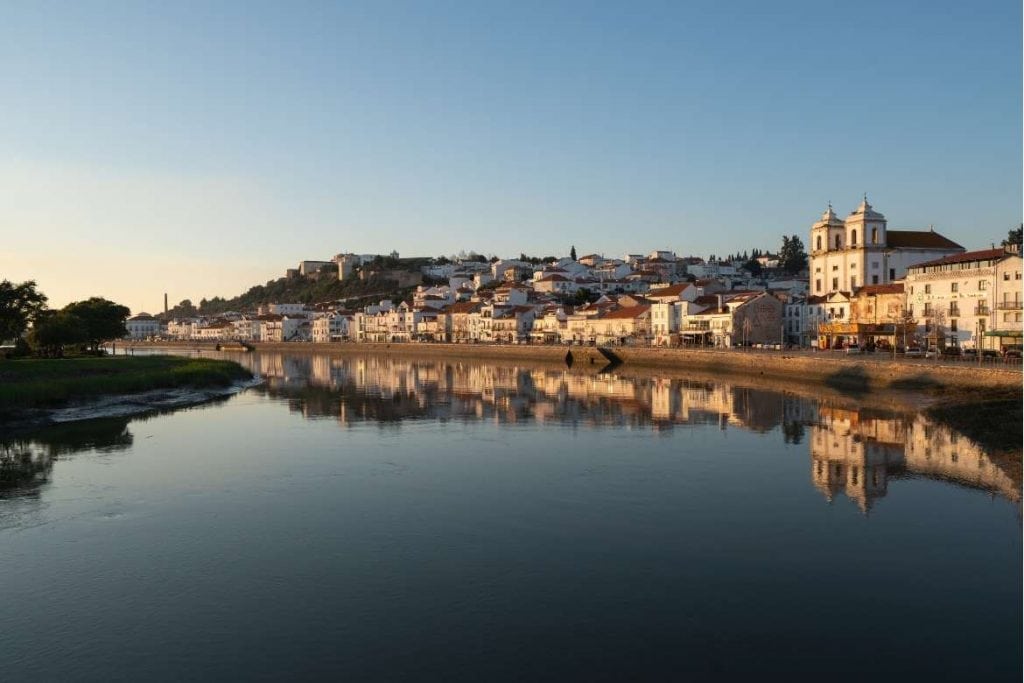
Just 1 hour from Lisbon, it was once the Moors’ regional capital, and the name comes from the salt industry. In the upper part of the city, the Islamic origin castle hides the hotel Pousada Dom Afonso II. The most famous beach in the region is Comporta Beach, with a comfortable structure of bars, tents, and kiosks. Before setting foot on the sand, it is worth visiting the Palafítico Pier, which draws attention to its irregular structure, meticulously created to facilitate boats’ movement.
Odemira
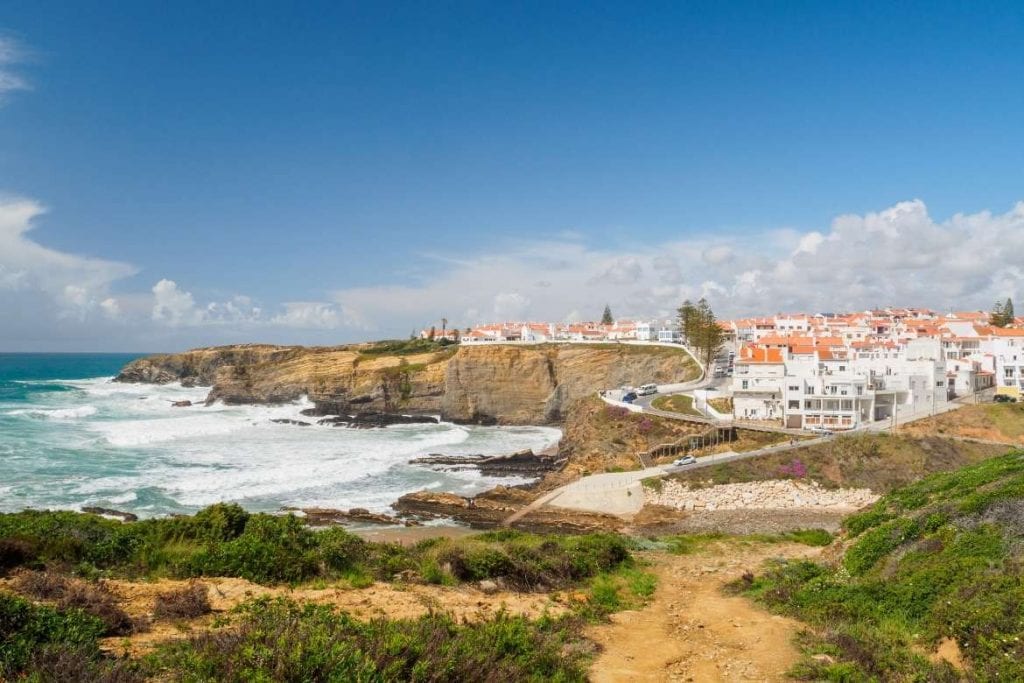
Further south, there is the oceanic village Odemira, with landscapes of mountains and sea. The coastal strip has 12km of beach, including the beautiful Malhão, Milfontes, Franquia, Farol, Furnas, Almograve, Zambujeira and Carvalhal. Nearby is the SouthWest Alentejo and Vicentine Coast Natural Park, a natural sanctuary with the edge cut by cliffs, beaches, and dunes.
Grândola
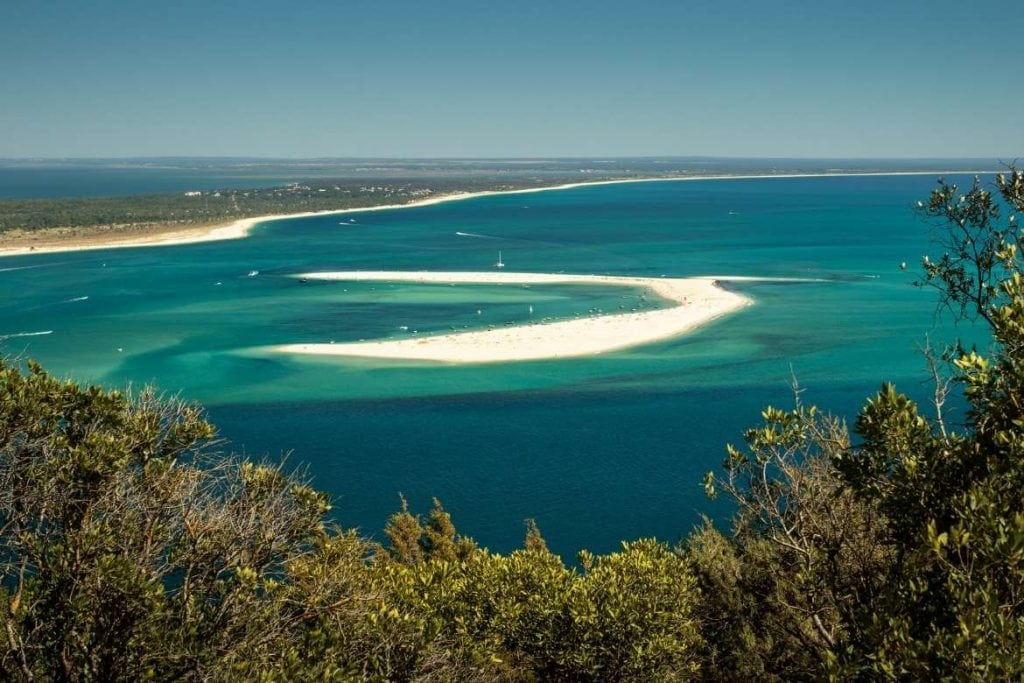
A village that belongs to the district of Setúbal, characterized by a landscape of mountains, plains, and sea. Its coast attracts tourists to the beaches of Comporta (see Alcácer do Sal) and Carvalhal and is a starting point for the Peninsula of Tróia, which is a half-hour drive. Located between the Atlantic Ocean and the Sado River’s estuary, Tróia has beautiful beaches and the Roman Ruins, where is located a large complex of fish salting.
Baixo Alentejo (Southern Region)
The Southern Region, land of sun and Mediterranean climate, Baixo Alentejo is divided into 13 municipalities, with Beja being the capital. It holds rich gastronomy with meats, fish, cheeses, hams, and sausages with a varied production of cork, olives, wheat, and grapes. Its main natural resource is the Guadiana River.
Beja

The capital of Baixo Alentejo stands out for its agricultural plains and a well-preserved castle. Its Keep, built with marble, is 40 meters high and one of the country’s tallest. Other tourist attractions are the Convent of Nossa Senhora da Conceição (Regional Museum of Beja), the Church of Santa Maria, and Santo Amaro’s Church (Visigothic Nucleus of the Regional Museum of Beja).

